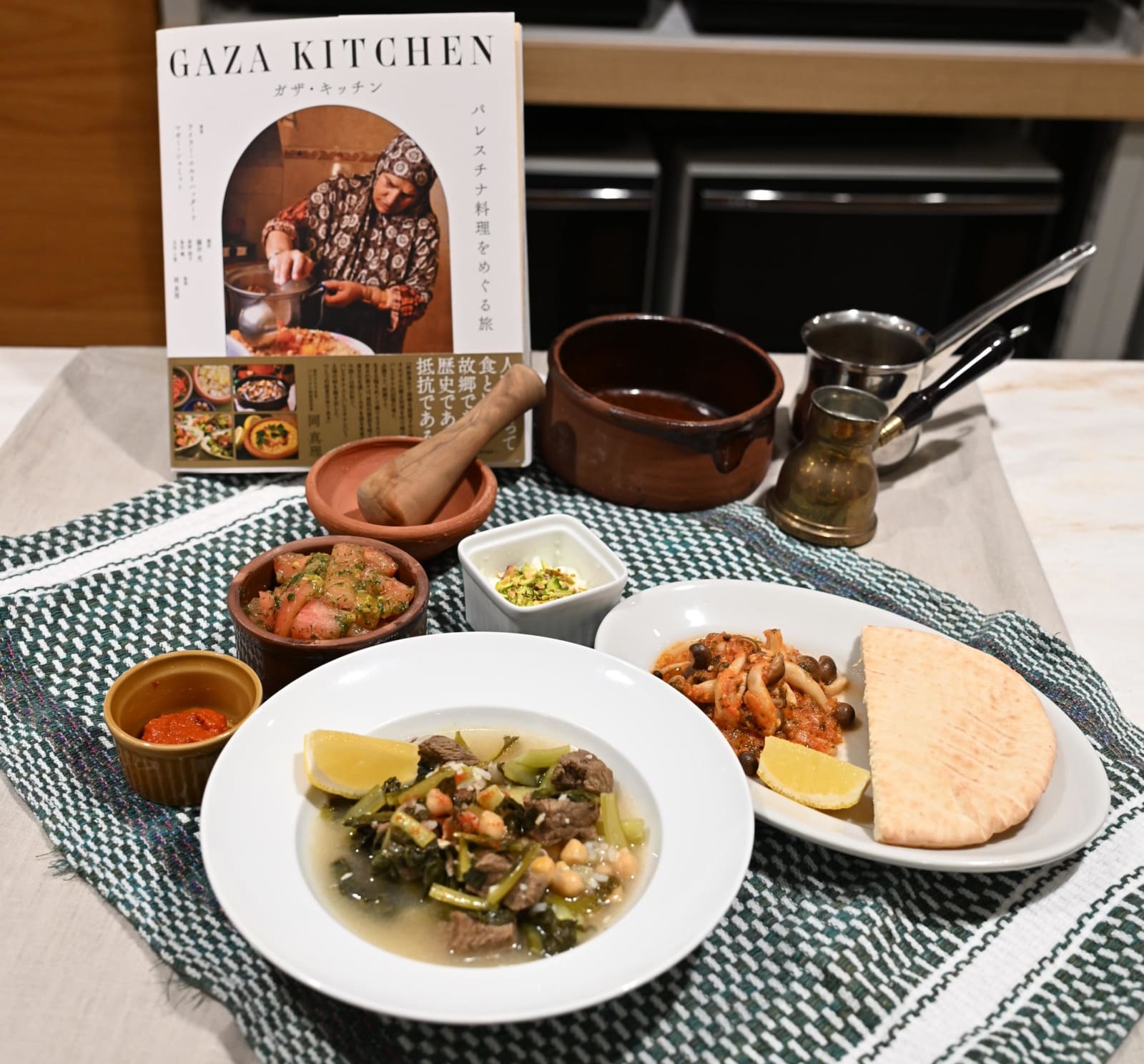TOKYO - With a cease-fire agreement between Israel and Hamas now in place, Gaza is starting to rebuild. A recent culinary event provided ind...

TOKYO - With a cease-fire agreement between Israel and Hamas now in place, Gaza is starting to rebuild. A recent culinary event provided individuals in Japan with a unique opportunity to connect with the region's inhabitants through cuisine — and to envision daily life prior to the destruction.
At Orangepage Inc.'s Koto Laboratory, an interactive learning studio located in Suginami Ward, Tokyo, attendees came together to prepare and sample dishes from "The Gaza Kitchen: A Palestinian Culinary Journey," a cookbook translated into Japanese by a culinary and lifestyle magazine publisher.
After a successful first event in July, the second gathering took place in October, aligning with the two-year anniversary of Israel's attack on Gaza, which endured significant destruction during the fighting, with approximately 80 percent of structures reported to be ruined or damaged.
Within the crowded venue, Aki Komatsu, an Arab confectionery and cooking expert who studied in Syria and Egypt, cooked traditional Gazan dishes with ingredients that are hard to find in Japan.
The menu featured "fogaiyya" — a lemony chard, chickpea, and rice stew — prepared using komatsuna Japanese mustard spinach as an alternative to chard, a leafy vegetable that is hard to find in Japan.
Israel has encountered global criticism from human rights organizations, which describe the use of starvation as a tool of warfare, including the obstruction of aid deliveries and causing civilians to suffer from hunger. Some participants expressed discomfort about consuming food from Gaza when people there are still experiencing shortages.
However, after hearing an explanation from one of the book's translators, Hikaru Fujii, an associate professor of American literature at the University of Tokyo, and observing the appealing dishes being prepared, the attendees were mesmerized.
While they ate the meal, an energetic conversation took place — blending food discovery with thoughts on Gaza's people and traditions.
Fujii, who is recognized for translating modern American literature such as Anthony Doerr's book "All the Light We Cannot See," mentioned that "The Gaza Kitchen" marked his initial effort in translating nonfiction.
I was surprised to discover I had no knowledge," Fujii stated. "I couldn't envision which particular elements of life were being lost.
There are many individuals similar to me who are curious but lack specific understanding about Gaza," he stated. "What types of food did they consume, and how did they share meals? I couldn't stop wondering, so I started looking, and that's when I discovered the original version of this book.
I believed this was a book that everyone should read. I wanted to attempt translating it," Fujii said. "I felt we needed to act quickly.
Fujii mentioned that a translation group was established, consisting of three graduate students, two from the University of Tokyo and one from Kyoto University.
The English-language book was authored by Laila El-Haddad, a writer originally from Gaza currently residing in the United States, and Maggie Schmitt, an American-born author living in Spain who focuses on the Mediterranean region.
The book showcases the homemade meals of Gazans. Since approximately 2010, the authors have collected recipes, interviews, and images that highlight Gaza's culinary traditions — ranging from rice and fish dishes recognizable to Japanese tastes to seasoned stews and Mediterranean cuisine.
The book's pages feature not just recipes but also images of Gaza's lively streets — which are now mostly ruined.
Fujii mentioned that the translation group sought guidance from Mari Oka, a professor of Arabic literature at Waseda University, to maintain precision. "It was difficult because none of us had ever visited the Gaza Strip," he added.
In the past, Gaza served as a crucial trading center connecting Africa with Asia. Following World War I, it was placed under British Mandate rule and subsequently fell under Egyptian authority after the 1948 Arab-Israeli conflict.
People fleeing other areas of Palestine caused the population to grow from tens of thousands to approximately 2.2 million by 2023.
This blend of beginnings resulted in a vibrant and varied food tradition. Oka refers to Gaza's cuisine as "a museum of Arab cooking."
The project, according to Orangepage based in Tokyo, aimed to promote culinary traditions outside of Japan.
"As a culinary publication, we feel it is our responsibility to showcase the dishes being prepared in households across the globe," said editor Kei Okano.
Although some of the Gazans highlighted in the book are thought to be missing or deceased, Fujii referred to the compilation of family recipes as "a type of living testimony literature."
The book, which costs 4,950 yen (approximately $32), has gained coverage from local media and is now available in numerous public library systems.
A attendee at the Tokyo gathering mentioned that the experience made the far-off conflict seem more intimate.
I used to believe Gaza was a distant location I only encountered through the news. Discovering its cuisine helped me feel more connected to the people residing there.
Amid a world separated by politics and geography, "The Gaza Kitchen" serves as a reminder that common meals can foster connection.
For certain individuals, the book is merely a compilation of recipes. However, for others, it represents a subtle gesture of connection — one that aids in reviving the image of a city where, even amidst difficulties, families once came together at tables to savor delicious food and each other's presence.



